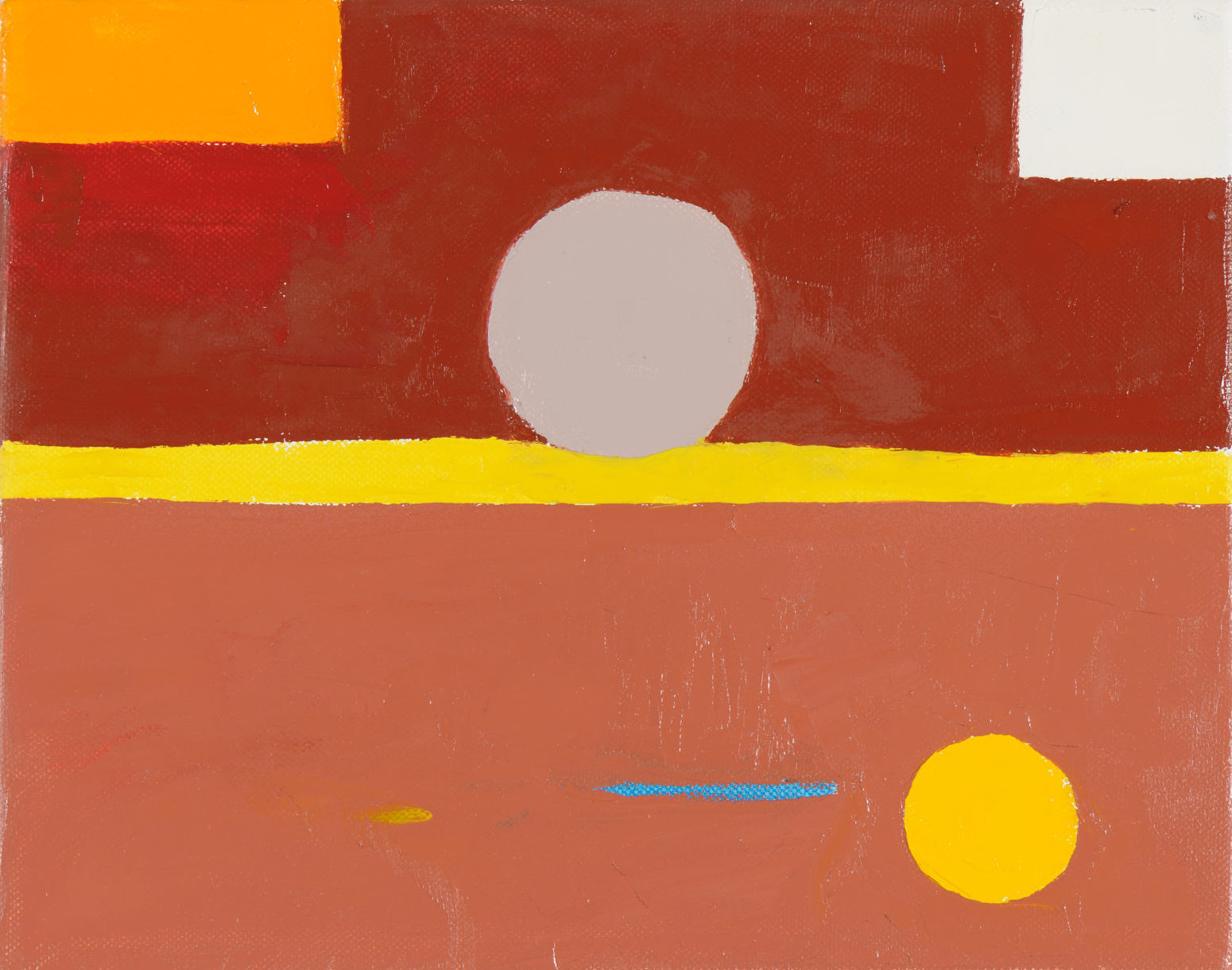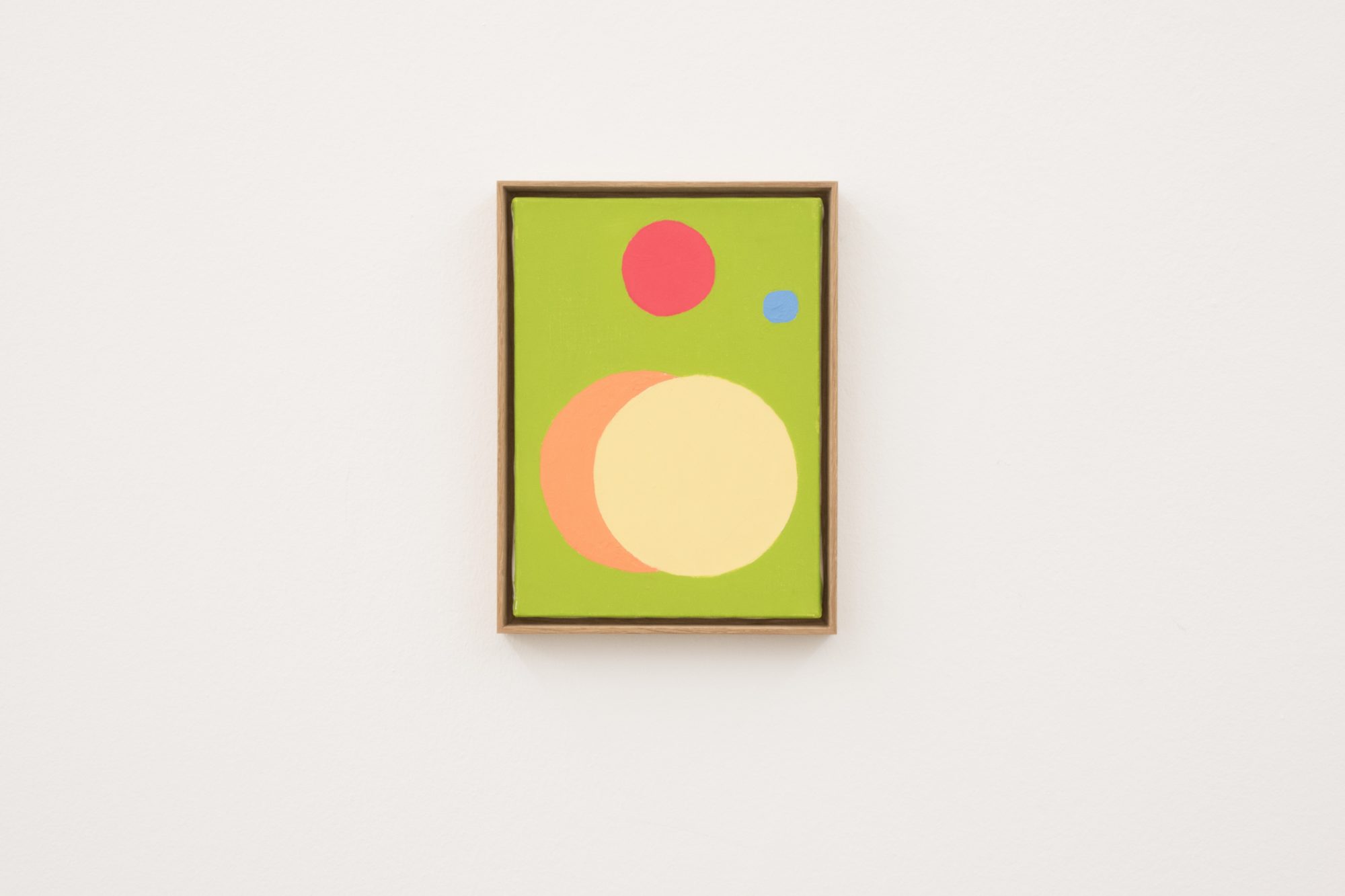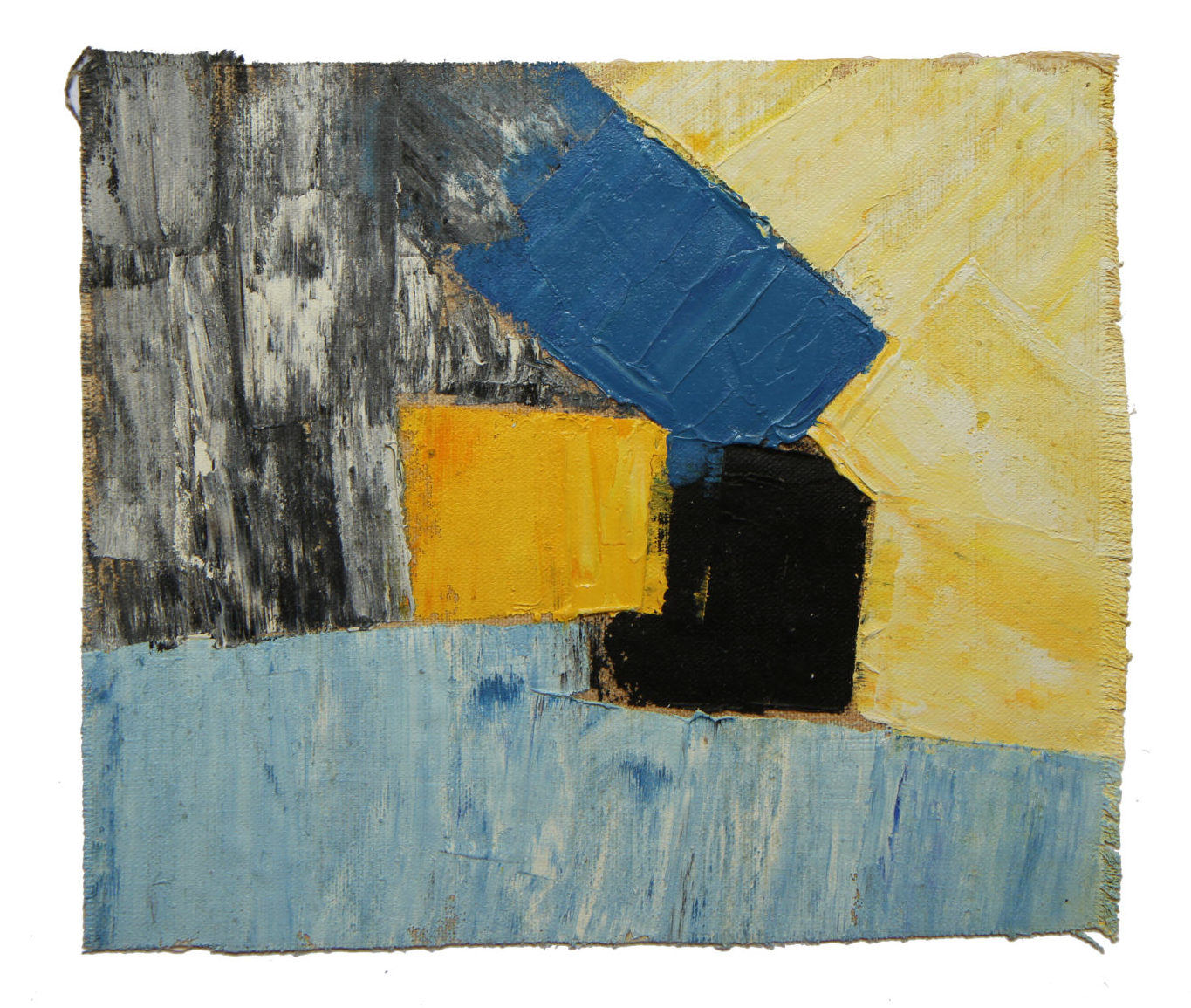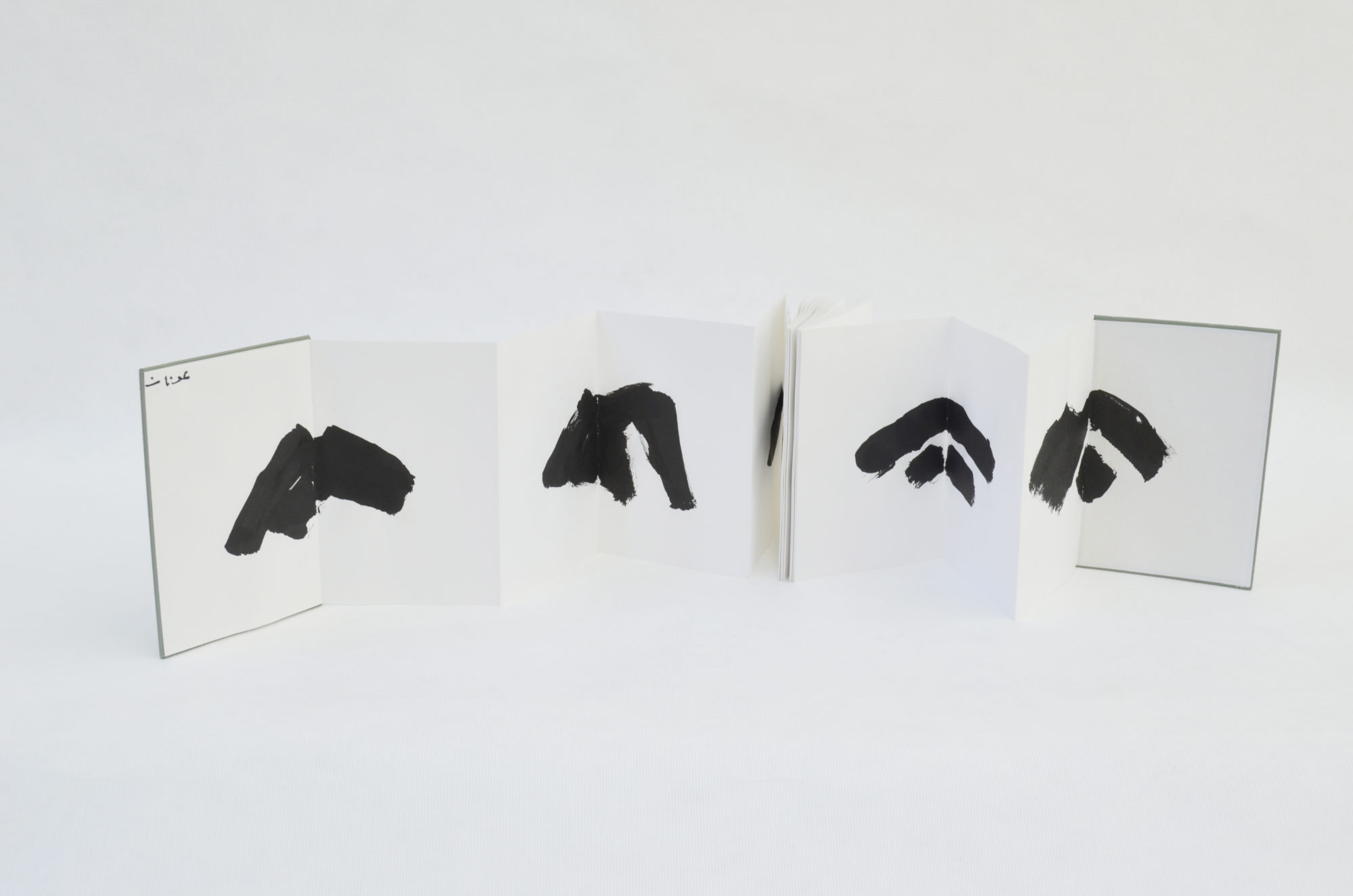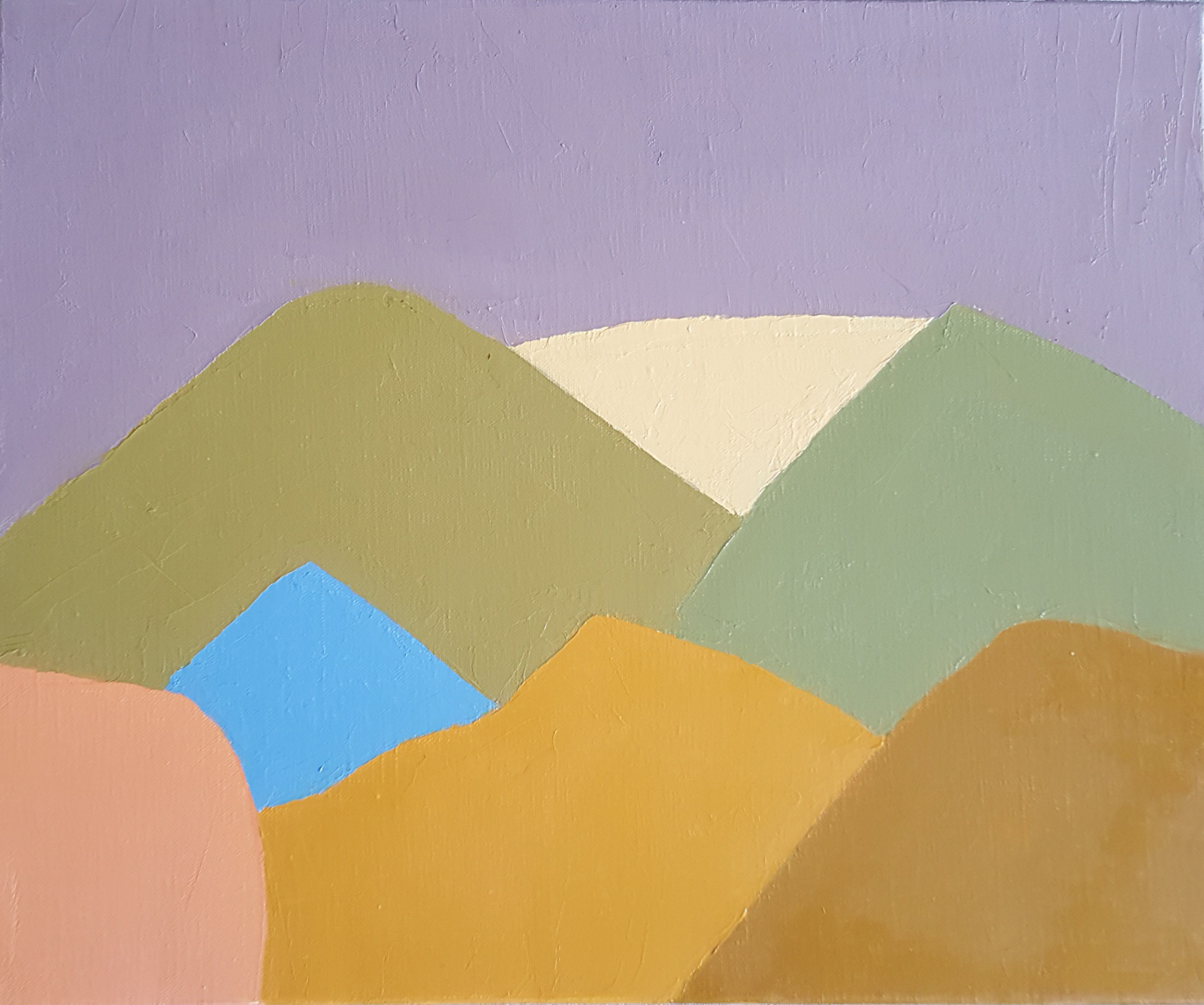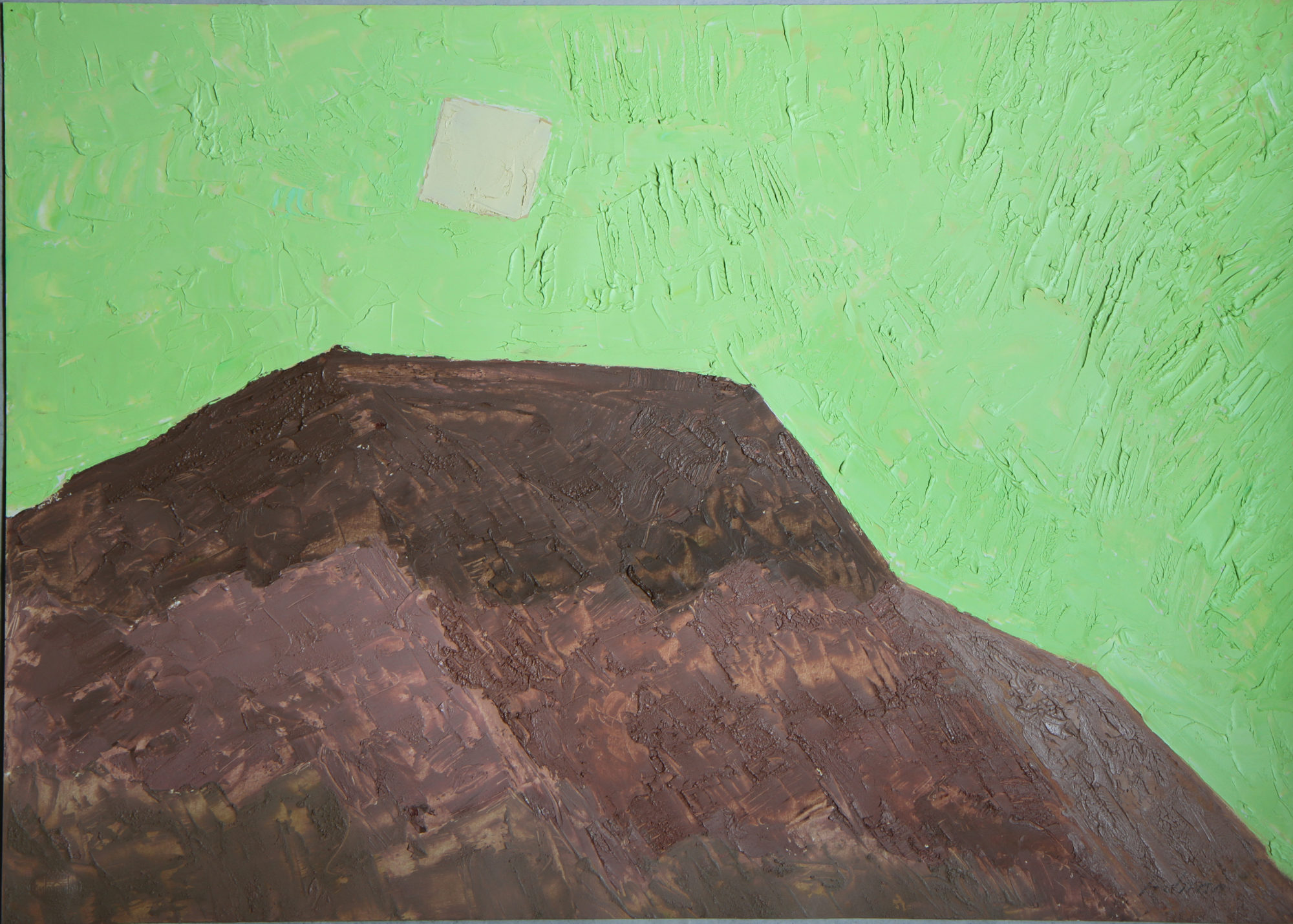Out of Beirut
Etel Adnan, La Joie de l’Espace, 2013, wool, tapestry, woven by Ateliers (Pinton, Fellentin, France), [courtesy of the artist and Sfeir-Semler Gallery, Beirut-Hamburg]
Share:
Beirut is a dreamscape. Or so I was told growing up between Egypt and Saudi Arabia. After the Lebanese Civil Wars ended in the early 1990s, I recall my grandmother taking trips back and forth to buy clothes. She filled suitcases with jeans and black boots. She would regale me with tales of sitting in coffee shops shrouded in smoke and conversing with artists for her journalistic column in the local Egyptian newspaper. I never saw any of these articles actually materialize. Perhaps because, for her, the act of “being there” was enough. The column was the excuse. I never made it to Beirut until 2009. I was an adult on a career path. I had spent my life until that point confounded by the fact that so few people in the art world looked like me or bore names like mine. Where were they hiding?
There was a buzz around Beirut. Around the artists who emerged after the civil wars: Walid Raad, Joana Hadjithomas and Khalil Joreige, Akram Zaatari, Lina Saneh, Rabih Mroué, Walid Sadek, Tony Chakar, and so many others. It was, of course, another kind of fantasy that was built through the incredible work of two women: Christine Tohmé, who in 2000 staged the Hamra Street Project, for which she filled an entire “busy” street, in one of the city’s most vibrant neighborhoods, with the work of a generation of young, burgeoning artists, many of whom had studied abroad, lived in the diaspora, or vice versa; and Andrée Sfeir-Semler, the Hamburg-based gallerist who came back to the Middle East to open up the most notable commercial gallery in Lebanon (if not the entire Arab World). She promoted these very same artists with fervor and a skilled determination—she wanted them on the international stage, in institutions, everywhere. Sfeir-Semler was an academic of sorts. She had attained a PhD on the Paris salon in 1980 and was not your quintessential salesperson. She once told me, “I opened my own gallery because I didn’t want to beg other people for money. I wanted to do the shows that I wanted to do.”
Etel Adnan, Untitled, 2010, oil on canvas, 24 x 30 centimeters [courtesy of the artist and Sfeir-Semler Gallery, Beirut-Hamburg]
And so I traversed this dreamscape. I had seen a show of works by many of these artists in 2006 at an exhibition at Modern Art Oxford, curated by Suzanne Cotter, called Out of Beirut. I was familiar with many of these artists, and was curious to learn more. I met many of them in a pseudo-artist colony filled with cafes and bars within the semi-residential neighborhood of Mar Mikhael. Our conversations all seemed to be about time. Beirut had this chronic slippage of time, whereby we never really knew what realm we were in—minutes seemed to flow into hours. I felt this condition with every artist, and in every conversation: a desire to reconstitute history without ever having to confine to its specific parameters.
I walked across the city in the summer heat toward a neighborhood called Solidere, which was a historic part of the city that had been gentrified by the Solidere planning and developing company—an enterprise that had ties to the government. Here, in Amir Amin Square, I saw a bench surrounded by these odd white modernist contortions that reminded me of Le Corbusier, of Henry Moore: could I sit on art history?
It turned out that I was indeed surrounded by art history, the work of Saloua Raouda Choucair, one of Lebanon’s first modernist and abstract artists. She was born in 1916, and it is believed that she initially wanted to become an architect. After studying in Paris at Fernand Léger’s atelier, she began to make geometric abstractions—paintings, gouaches, and sculptures that seemed to ascend to the heavens. Works such as Poem (1963–1965), Interform (1960), Poem Wall (1963–1965), and Sculpture With One Thousand Pieces (1966–1968) were all complex geometric abstractions, dominoes, homages to cityscapes, dreamscapes. Was it Beirut? Or was it Paris that inspired her? These works were cityscapes within cityscapes. Interlocking forms such as her Dual series, which transformed architectures into interlinking bodies—they exude desire, they are tactile and precious at the same time. And, despite the progressive nature of her art, she never sold a work until 1962.
Etel Adnan, Untitled, 2017, oil on canvas, 32.7 x 24 centimeters [courtesy of the artist and Sfeir-Semler Gallery, Beirut-Hamburg]
On the international stage, her representation was even less visible than any of her Lebanese male peers—until Jessica Morgan took the risk of mounting a major show of her work at Tate Modern that brought together the divergent threads of her practice. In reflecting upon the Tate catalogue that was published to coincide with the exhibition, I surveyed the lenders list, and almost all of the works had come directly from the artist—or rather, her daughter, Hala, who was managing the Saloua Raouda Choucair Foundation. If we staged an exhibition of Saloua’s work today, we would probably have to borrow works from 20-odd collections. The point being: this exhibition singlehandedly brought long overdue attention to an artist who was out of sight and out of mind for far too long. Look at her work from the early 1960s and you can see experiments and complexities that were as sophisticated, if not more so, than ones by her Western male peers, such as Donald Judd, Carl Andre, and Frank Stella. But I do not wish to invoke animosity here.
Indeed, 2012 was a year of magical sparks for female Lebanese artists and for a particular generation of women from all over the Middle East, thanks to the work of documenta 13. Specifically, that same year Carolyn Christov-Bakargiev gave over a ginormous chunk of the documenta Halle during documenta 13 to Etel Adnan, an octogenarian artist whom few had heard of. Adnan was born in 1925 in Beirut to a Christian Greek mother from Smyrna and a Muslim Syrian father. A multiplicity of languages surrounded her as she grew up. Eventually Adnan, like Choucair, left Lebanon for Paris. Why? For freedom—she was a lesbian. Was Beirut too oppressive? Yet she was not in Paris for long. Adnan returned and became a journalist for a local newspaper. She wrote and wrote and wrote—poems and novels about time and place, her most recognizable book being the novel, Sitt Marie Rose (1978), a book about conflict and execution, which one could argue foreshadowed the effects of the Lebanese Civil Wars in its subject matter. Was the feeling so palpable?
Etel Adnan, Untitled, 1950-1970, oil on canvas, 22.5 x 26.5 centimeters [courtesy of the artist and Sfeir-Semler Gallery, Beirut-Hamburg]
Adnan also painted, colorful forms inspired by landscapes and divergent architectures (but in an altogether different way than Choucair). Her canvasses were often small but ebullient. She also produced tapestries, many of which were not realized at the time but are being produced today. She then settled in the Bay Area in California, where for years she painted Mount Tamalpais, again, and again, and again. Mount Tamalpais became a metaphor—a site of relief from longing, one could argue, a site of retreat, but also of ascendance. As with Choucair’s, there is an architectural quality to the form of Adnan’s work that suggests a cityscape somewhere in the background. I always believe it to be Beirut—that broken city, once dubbed the “Paris of the Middle East,” which so often struggled with conflict that would crush every dream. Indeed, for Choucair, she frequently lived in dangerous circumstances, and some of her canvasses and sculptures even bear traces of stray bullets that were fired during the civil wars.
After documenta 13, Adnan’s work became prized and appeared in every biennale, and the prices of her artworks, appropriately, rose significantly. Most importantly, she was canonized into art history as a multidisciplinary artist whose poems wove themselves into her paintings. In fact one of her most iconic series is her leporellos: accordion-like notebooks that merge paintings and poems, illustrations of her imaginings of the words of others, often the words of other great Arab poets. I was told once by Joana Hadjithomas, a dear friend of Etel’s, that Adnan at one time would illustrate a poem and then send it to the poet; later she started keeping them as artworks, as an archive of a genealogy. This is a genealogy of how Arab culture—an oral, literary one that can traverse its way into the visual. Adnan’s leporellos evoke a kind of mysticism. They are paintings, but they are also books––notebooks that you can never touch, because they often live in vitrines, unless you are prosperous enough to afford one. But it is within this realm––the holding back of the word, of the image––that something truly magical happens. We start to understand that Adnan’s practice is about the in-between space of art and architecture, an architecture that we can never contain, hold, or live with: again, are we returning to the dreamscape that is the city of Beirut?
Etel Adnan, Mountains, 2012, leporello: black ink, 18 x 12 centimeters; 24 pages: 17.8 x 11.7 centimeters [courtesy of the artist and Sfeir-Semler Gallery, Beirut-Hamburg]
It is no coincidence that I speak here of two women. Both, one can deduce, were partly shunned by the local and international art world because of their gender. In Lebanon during the 1960s, many collectors were acquiring the works of male painters such as Shafic Abboud and Aref Rayess, who produced large-scale canvasses of abstractions. Why were these abstractions made the preserve of Lebanese society, while Choucair and Adnan were not? Abboud had also lived in Paris, and stayed away from Lebanon for significant chunks of time, as did Rayess. One can only speculate, but was it the dearth of institutional and commercial forces? I scratched the surface and found out through Lebanese collector Carla Chammas that Helen Khal, an American-born artist and critic of Lebanese descent, had actually opened Gallery One, the first commercial gallery in Lebanon, in 1963. From my conversations, I learned that it showcased a variety of art, from music to visual art, including the work of these women.
For a previous issue of ART PAPERS, I wrote an article about the Lebanese painter Huguette Caland, who moved to Paris before settling in Venice, California. She, however, has yet to be given her due—that “moment” that canonizes her. She left Beirut. Saloua left (for a time). Etel ultimately left and is now in Paris. What is it, then, about Beirut that draws you in and spits you out? In my numerous trips to the city I began to untangle an unusual reality whereby Palestinian refugees live in camps without full civil rights while others are able to dine in high-end restaurants and to shop in luxury boutiques. Today the Syrian refugee crisis has filled the streets of Beirut with young girls and boys begging for money. On one occasion, in 2015, as I was sitting at a bar on a third-floor balcony, a young Syrian girl was dangling off the edge and threatening to throw herself over unless I gave her money. I picked her up, threw her inside the bar, and told her she shouldn’t do such things—before giving her what money I had. There are the militant political party Hezbollah, stationed in the south of the country; an insurmountable garbage crisis; daily power cuts; slow Internet connections; and yet, on the face of everything, Beirut remains Beirut, a site of mysticism within the region. Always seen as “progressive” and “open.” Indeed, despite homosexuality not being formally protected, I have never ventured to more gay bars than I have in Beirut. I have never danced on tables like I have in Beirut, nor I have smoked as many cigarettes over whiskey in one place.
Etel Adnan, Untitled, 2016, oil on canvas, 38 x 46 centimeters [courtesy of the artist and Sfeir-Semler Gallery, Beirut-Hamburg]
I, too, turned a blind eye. I felt guilt only afterward –that I had propagated a form of colonial imaginary. But I wanted to enjoy Beirut with the friends whom I had made since 2009. I wanted to live in the dreamscape that my grandmother spoke of when I was young. But why? The Arab world is crowded and clouded with conflict. In my native Egypt, after the Egyptian Revolution in 2011, everyone I knew changed. It was palpable. I felt as if everyone I knew wanted to leave, but they were trapped for circumstantial reasons. In Beirut, the conflict never ends, but life somehow goes on. People live their lives, and artists continue to make work that inspires and shapes our collective imagination. For Saloua Choucair and Etel Adnan, I can only imagine that Beirut was as it is for me: a jewel that one always has to return to, but also escape from. But there is a dream in Beirut that never dies, an anti-Oriental fantasy, of a world whereby the spirit of the individual can never truly be destroyed.
Etel Adnan, Untitled, 1965-1970, oil on canvas, 50 x 69.7 centimeters [courtesy of the artist and Sfeir-Semler Gallery, Beirut-Hamburg]
Omar Kholeif is a writer, curator and broadcaster based in London. He is currently curating the 14th Sharjah Biennial and the V-A-C Pavilion at the 56th Venice Biennale; is a guest curator for Manchester International Festival, and Abu Dhabi Art. His most recent books include “Goodbye, World! Looking at Art in the Digital Age” (Sternberg Press) and “The Artists Who Will Change the World” (Thames & Hudson) (both 2018).
